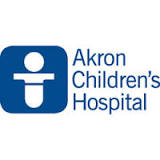Prochlorperazine Versus Prochlorperazine & Ketorolac in Treatment of Pediatric Migraine in the Emergency Department
| Status: | Completed |
|---|---|
| Conditions: | Migraine Headaches, Hospital |
| Therapuetic Areas: | Neurology, Other |
| Healthy: | No |
| Age Range: | Any |
| Updated: | 11/18/2012 |
| Start Date: | October 2011 |
| End Date: | June 2013 |
| Contact: | Sarah Kline-Krammes, MD |
| Email: | SKline-Krammes@chmca.org |
| Phone: | 330-543-3460 |
A Randomized Double Blinded Study Comparing Use of Prochlorperazine Versus Prochlorperazine and Ketorolac in the Treatment of Pediatric Migraine in the Emergency Department
The aim of this study is to evaluate whether the use of prochlorperazine and ketorolac in
combination lead in a larger reduction in pain score compared to prochlorperazine alone when
treating pediatric migraine in the Emergency Department (ED). Our hypothesis is that this
combination of medications treats not only the pain but also the associated gastrointestinal
symptoms of migraine. The main outcome of this study is the reduction in the patient's pain
score at 60 minutes from administration of the study medications. Secondary outcomes
include the number of patients achieving complete resolution of the headache while in the
ED, the number of patients requiring additional treatment interventions by the treating
physician, the number of patients with resolution of the associated symptoms like nausea,
vomiting, photophobia and phonophobia, the recurrence of headache in the 48-72 hours after
discharge, and side effects of the medications.
Inclusion Criteria:
1. patient aged 8-18 years presenting to Akron Children's Hospital (ACH) ED with
complaint of headache
2. patient has an established diagnosis of migraine without aura or as established by
history meets the criteria for migraine headache as defined by the International
Criteria for Headache Disorder -II in 2004 a. At least 5 episodes of headache b. The
headache should last between 1-72 hours c. The headache should include two of the
following: i. Unilateral location, though may be bifrontal or frontotemporal in
location but should not be occipital ii. Pulsing quality iii. Moderate to severe pain
iv. Aggravation by or causing avoidance of routine physical activity d. One of the
following symptoms should accompany the headache i. Nausea or vomiting ii.
Photophobia or phonophobia e. The headache should not be attributed to another
disorder based on history, physical and/or laboratory information.
Exclusion Criteria:
1. Patients with a contraindication to receiving prochlorperazine, ketorolac,
diphenhydramine, or naproxen
2. Patients unable to complete the pain scale.
3. Patients on medications that will have a drug-drug interaction with the study
medication including prochlorperazine, ketorolac, diphenhydramine or naproxen.
4. Patients with any medical condition that may be contributing or associated with the
current headache such as concussion or trauma
5. Female patients with a positive urine HCG point of care test
6. Patients with diagnosis of or suspected to have chronic daily headaches defined as a
headache lasting at least 4 hours for more than 15 days a month for the past 3
months.
7. Patients who received prochlorperazine or ketorolac in the past 48 hours.
8. Patients who had previously been randomized in this study in the past 3 months.
We found this trial at
1
site
Akron Children's Hospital From humble beginnings as a day nursery in 1890, Akron Children
Click here to add this to my saved trials
